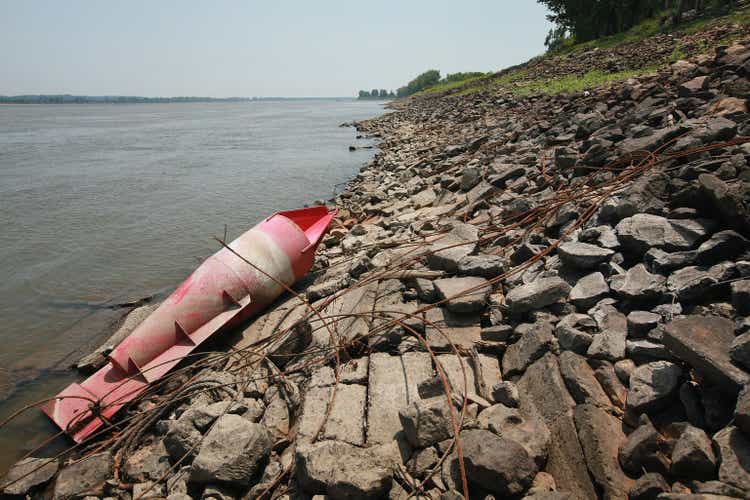Scott Olson/Getty Images News
The “Mississippi” has long been used as a filler to count seconds, but many are now concerned about counting its feet. Case in point: Levels of the important waterway in Memphis have just hit a new all-time low record of -10.77 feet. The situation is reminiscent of troubles seen on the Rhine River in Europe and the Yangtze in Asia as years of severe drought deliver harmful effects across the globe.
Snapshot: The Mississippi River is a critical shipping route, especially for farmers and commodity dealers, and the lower water levels have impacted transportation. Estimates vary greatly, but the river is thought to normally carry around 60% of America’s corn and soybean exports. Many farmers are also throwing away their crops instead of harvesting right now, in the hope of better conditions that could still be weeks away.
Meanwhile, companies are not loading as much cargo onto ships – so they can travel safely and not bottom out – while fewer barges are included in each tow. According to the American Commercial Barge Line, the industry has agreed to a 25-barge tow max size, which translates into around a 17-38% reduction in capacity. Dredging by the U.S. Army Corps of Engineers has been helpful to keep the traffic flowing, but new challenging spots can surface any day.
Commentary: “While the public and media generally understand that our economy depends upon viable international ocean shipping, trucking, and rail transportation, the essential role of our inland waterways is often overlooked,” said Peter Friedmann of the Agriculture Transportation Coalition. “Our members depend upon adequate water levels in the Mississippi River system, to reach domestic and international export markets. The low water disruption of the supply chain will be felt not only by our U.S. producers of food, farm, and fiber but also by U.S. and international consumers as well.”
Image and article originally from seekingalpha.com. Read the original article here.

